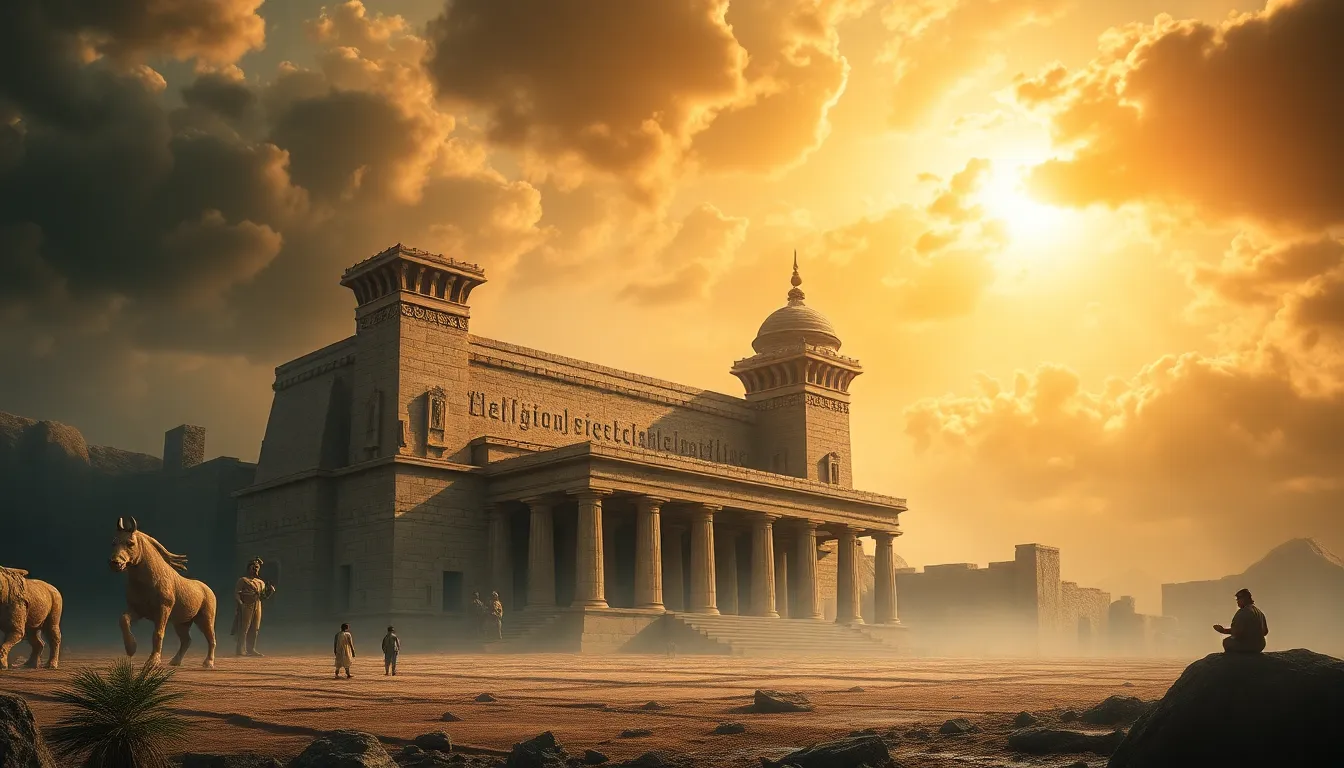The Legendary Kingdom of the Sumerians: Myths of the First Civilization
I. Introduction
The Sumerian civilization, one of the earliest known civilizations, emerged in the southern part of Mesopotamia, in present-day Iraq, around 4500 BCE. Renowned for its advances in writing, architecture, and governance, Sumer stands as a cornerstone of human history. Myths played a crucial role in Sumerian culture, serving not only as narratives that explained the world around them but also as tools for social organization and religious practices. This article explores the rich tapestry of Sumerian myths, their historical context, and their enduring legacy.
II. The Historical Context of Sumer
Geographically, Sumer was located in the fertile region between the Tigris and Euphrates rivers, an area conducive to agriculture. The timeline of Sumer stretches from its formation around 4500 BCE to its eventual decline around 2000 BCE, when it was absorbed into the Akkadian Empire.
Some of the major city-states of Sumer included:
- Ur: Known for its impressive ziggurat and as a center of trade.
- Uruk: Often considered the world’s first city, it was a cultural hub.
- Lagash: Famous for its art and political innovations.
The Sumerians contributed significantly to human civilization through innovations such as the cuneiform writing system, the establishment of codified laws, and advancements in agriculture, which laid the groundwork for future societies.
III. Sumerian Deities: The Pantheon of Gods
The Sumerian belief system was polytheistic, with a rich pantheon of gods representing various aspects of life and nature. The gods were believed to have human-like qualities and emotions, influencing both the natural world and human affairs.
Key deities included:
- Anu: The sky god and father of the gods.
- Enlil: The god of wind and storms, considered the chief deity.
- Inanna: The goddess of love and war, embodying both nurturing and destructive forces.
The relationship between these gods and humans was complex, characterized by a mixture of reverence, fear, and the necessity of appeasing the deities through rituals and offerings.
IV. Creation Myths: The Birth of the Cosmos
Sumerian creation stories are foundational myths that explain the origins of the world and humanity. The most notable of these is the Enuma Elish, which details the creation of the universe from primordial chaos.
In this narrative, the goddess Tiamat represents chaos and is eventually defeated by the god Marduk, who emerges as a central figure in the Sumerian pantheon. This myth not only illustrates the establishment of order from chaos but also underscores the theme of divine struggle.
V. The Epic of Gilgamesh: A Sumerian Hero’s Journey
The Epic of Gilgamesh is one of the most significant works of literature from ancient Sumer. It recounts the adventures of Gilgamesh, a historical king of Uruk, and explores themes of friendship, the quest for immortality, and the human condition.
Key themes in the epic include:
- The quest for knowledge and wisdom
- The inevitability of death
- The importance of friendship, particularly between Gilgamesh and Enkidu
Gilgamesh’s quest for immortality ultimately leads him to understand the value of life itself, making a profound impact on later literature and philosophy.
VI. Myths of the Underworld: The Land of the Dead
Sumerian beliefs about the afterlife were complex, with a distinct view of the underworld, known as Kur. It was perceived as a dark and dreary place where all souls, regardless of their deeds in life, went after death.
One of the most famous myths related to the afterlife is the story of Inanna’s descent to the Underworld. Inanna, seeking power and knowledge, descends to the realm of her sister Ereshkigal, the queen of the underworld. This journey symbolizes themes of death, rebirth, and the cyclical nature of life.
The significance of death in Sumerian culture was profound, informing their rituals and societal norms regarding mourning and the treatment of the dead.
VII. The Role of Myths in Sumerian Society
Myths served multiple purposes in Sumerian society, functioning as tools for explaining natural phenomena and societal norms. They provided a framework for understanding the world and humanity’s place within it.
Additionally, myths influenced governance and law, as rulers often invoked divine sanction for their authority. The connection between myth and reality was evident in:
- Rituals that reinforced the social hierarchy.
- Legal codes that were believed to be divinely ordained.
- Festivals celebrating the gods, which fostered community cohesion.
VIII. Sumerian Myths and Their Legacy
The influence of Sumerian myths extended beyond their civilization, impacting later cultures such as the Babylonians and Assyrians. Many Sumerian stories were absorbed into these cultures, often adapted to fit new contexts.
The preservation of myths through cuneiform texts has allowed modern scholars to study and interpret these ancient narratives, leading to various contemporary adaptations in literature and art. The themes of Sumerian mythology continue to resonate, reflecting universal aspects of human experience.
IX. Archaeological Discoveries and Their Impact on Understanding Sumerian Myths
Archaeological discoveries have played a crucial role in shedding light on Sumerian myths and beliefs. Major sites such as Uruk and Ur have yielded significant findings, including temples, ziggurats, and cuneiform tablets.
These tablets, inscribed with myths and stories, provide invaluable insights into Sumerian thought and spirituality. However, interpreting these ancient texts poses challenges, including language barriers and the contextual understanding of mythological symbols.
X. Conclusion
In summary, the Sumerian civilization, with its rich tapestry of myths, has left an indelible mark on human history. From their complex pantheon of gods to the profound narratives of the Epic of Gilgamesh, Sumerian myths provide insight into the values, beliefs, and experiences of one of the world’s first civilizations. Their legacy continues to influence modern culture and thought, demonstrating the timeless nature of these ancient stories.



